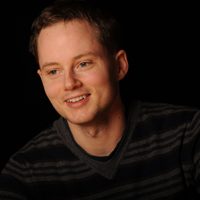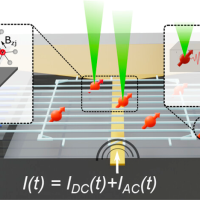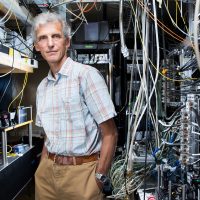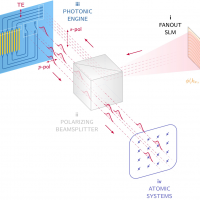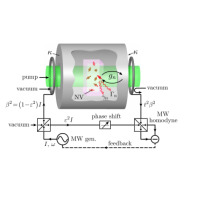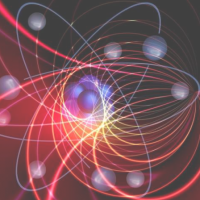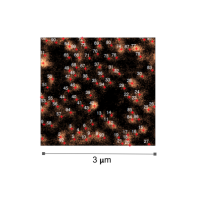- E. Bersin, D. Englund, Y. Lee, A. Dahlberg, and S. Wehner. A Quantum Router Architecture for High-Fidelity Entanglement Flows in Multi-User Quantum Networks. npj Quantum Information, 8(75), June 2023.
- H. Wang, M. Trusheim, L. Kim, H. Raniwala, D. Englund, Field programmable spin arrays for scalable quantum repeaters. Nature Communications, 14(704), February 2023.
- H. Raniwala, S. Krastanov, D. Englund, M. Trusheim, L. Hackett, and M. Eichenfield. Piezoelectric Nanocavity Interface for Strong Coupling between a Superconducting Circuit, Phonon, and Spin. Physical Review Applied, 19(064051), June 2023.
- H. Raniwala, S. Krastanov, D. Englund, and Matt Eichenfield. A spin-optomechanical quantum interface enabled by an ultrasmall mechanical and optical mode volume cavity. ArXiv 2022.
- M. Trusheim, D. Englund, Hanfeng Wang, and Laura Kim. Electric-Field Programmable Spin Arrays for Scalable Quantum Repeaters. ArXiv 2022.
- H. Raniwala, S. Krastanov, D. Englund, M. Trusheim, Lisa Hackett, and Matt Eichenfield. Spin-Phonon-Photon Strong Coupling in a Piezomechanical Nanocavity. ArXiv 2022.
- K. Chen, E. Bersin, D. Englund, A Polarization Encoded Photon-to-Spin Interfaces. npj Quantum Information , 7(2), January 2021.
- H. Choi, M. Trusheim, D. Englund, and L. Kim. Absorption-Based Diamond Spin Microscopy on a Plasmonic Quantum Metasurface. ACS Photonics November 2021.
- N. Wan, M. Trusheim, K. Chen, L. De Santis, D. Englund, D. Gangloff, R. Debroux, C. P. Michaels, C. Purser, J. A. Martínez, R. A. Parker, A. M. Stramma, E. M. Alexeev, A. C. Ferrari, and A. Atatüre. Quantum control of the tin-vacancy spin qubit in diamond. Phys. Rev. X , 11(041041), November 2021.
- M. Trusheim, D. Englund, K. Jacobs, J. E. Hoffman, D. P. Fahey, and D. A. Braje. A Polariton-Stabilized Spin Clock. ArXiv September 2020.
- M. Bhaskar, B. Machielse, D. Levonian, C. Nguyen, E. Knall, P. Stroganov, H. Park, D. Englund, D. Sukachev, M. Lukin, R. Riedinger, and M. Loncar. Experimental demonstration of memory-enhanced quantum communication. Nature, 580:60–64, 2020.
- H. Moon, E. Bersin, G. Grosso, D. Englund, C. Chakraborty, A.-Y. Lu, and J. Kong. Strain-correlated Localized Exciton Energy in Atomically Thin Semiconductors. ACS Photonics, 7(5):1135–1140, April 2020.
- M. Trusheim, N. Wan, L. De Santis, D. Gangloff, K. Chen, M. Walsh, E. Bersin, D. Lyzwa, D. Englund, B. Pingault, M. Gündoğan, R. Debroux, C. Purser, J. J. Rose, J. N. Becker, B. Lienhard, I. Paradeisanos, G. Wang, A. R-P. Montblanch, G. Malladi, H. Bakhru, A. C. Ferrari, A. Walmsley, and M. Atatüre. Transform-limited photons from a tin-vacancy spin in diamond. Phys. Rev. Lett., 124(023602), January 2020.
- D. Kim, A. Keesling Contreras, A. Omran, H. Levine, H. Bernien, M. Greiner, M. Lukin, D. Englund, Large-Scale Uniform Optical Focus Array Generation with a Phase Spatial Light Modulator. Optics Letters 2019.
- D. Kim, A. Keesling Contreras, A. Omran, H. Levine, H. Bernien, M. Greiner, M. Lukin, D. Englund, Large-Scale Uniform Optical Focus Array Generation with a Phase Spatial Light Modulator,. Optics Letters, 44(12):3178-3181, 2019.
- M. Trusheim, N. Wan, K. Chen, E. Bersin, M. Walsh, D. Englund, C. J. Ciccarino, R. Sundararaman, G. Malladi, B. Lienhard, H. Bakhru, and P. Narang. Lead-Related Quantum Emitters in Diamond. Phys. Rev. B, 99(075430), 2019.
- M. Walsh, E. Bersin, S. Mouradian, D. Englund, S. B. V. Dam, M. J. Degen, A. Galiullin, M. Ruf, M. IJspeert, T. H. Taminiau, and R. Hanson. Optical coherence of diamond nitrogen-vacancy centers formed by ion implantation and annealing. Phys. Rev. B, 99(161203), 2019.
- L. Marseglia, K. Saha, A. Ajoy, D. Englund, P. Cappellaro, T. Schröder, F. Jelezko, R. Walsworth, J. L. Pacheco, D. L. Perry, and E. S. Bielejec. Bright nanowire single photon source based on SiV centers in diamond. Optics Express, 26:80-89, 2018.
- A. Sipahigil, R. Evans, D. Sukachev, C. Nguyen, M. Lukin, D. Englund, T. Schroder, M.E. Trusheim, M. Walsh, L. Li, J. Zheng, M. Scjukraft, J.L. Pacheco, R. Camacho, and E.S. Bielejec. Scalable Focused Ion Beam Creation of Nearly Lifetime-Limited Single Quantum Emitters in Diamond Nanostructures. Nature Communications, 8, May 2017.
- D. Englund, B. Shields, H. Park, M. Lukin, Kelley Rivoire, Fariba Hatami, and Jelena Vuckovic. A Scanning Cavity Nanoscope. submitted to Nano Letters 2010.
- D. Englund, B. Shields, H. Park, M. Lukin, Kelley Rivoire, Fariba Hatami, and Jelena Vuckovic. A Scanning Cavity Nanoscope. Submitted 2010 2010.
Tue February 7, 2017 4:00 pm
Semiconductor Quantum Technologies for Communications and Computing
Location:MIT 4-270
Event type:
Mon August 24, 2020 12:00 am
Location:Virtual
Event type:
